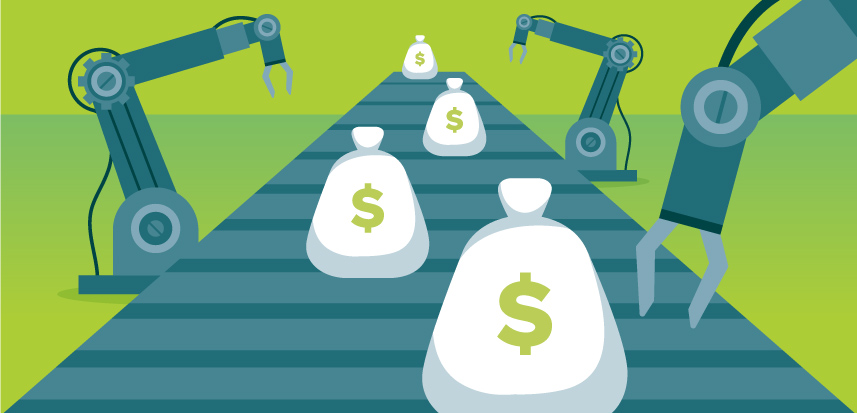Early payment discounts: A strategic advantage for AP teams
Accounts payable (AP) teams face mounting pressure to manage rising costs while maximizing operational efficiency. Early payment discounts present a unique opportunity for organizations to cut down on expenses and foster stronger supplier relationships that can lead to preferential terms down the line.
However, capturing these discounts requires more than timely payments. It also demands a clear understanding of the various discount types and the implementation of effective strategies—like AP automation—to ensure consistent savings over time.
Key takeaways
- Early payment discounts help organizations achieve significant cost savings over time by reducing invoice costs and managing outgoing payments more strategically.
- Understanding the main types of early payment discounts—static, sliding, and dynamic—enables AP teams to choose an approach that aligns with their needs.
- End-to-end AP automation can help organizations capture early payment discounts more consistently while improving efficiency and maximizing cost savings.
What is an early payment discount, and how does it work?
An early payment discount is a financial incentive that suppliers offer to buyers for paying invoices ahead of the agreed-upon due date. These discounts typically reduce an invoice total by a set percentage if the buyer pays within a certain timeframe.
The process is straightforward: When a buyer receives an invoice, they can choose to pay it early to benefit from the discount. For example, with terms like “2/10 net 30,” a buyer pays 2% less if they pay the invoice within 10 days instead of the full amount in 30 days (more on this in the next section).
Taking advantage of early payment discounts strengthens supplier relationships and encourages prompt payments, allowing suppliers to better manage their cash flow. It also helps organizations manage outgoing payments more strategically. For organizations handling a high volume of AP transactions, these discounts can translate into significant savings over time. This strategic approach helps companies optimize their financial operations and cash flow.
Types of early payment discounts
Early payment discounts can be separated into three categories:
- Static discounts
- Sliding scale discounts
- Dynamic discounts
Each type delivers distinct advantages. Let’s take a closer look below at the advantages and how each one works.
1. Static discounts
A static early payment discount provides a fixed percentage reduction if the buyer pays the invoice before the due date, regardless of other factors. For example, with a discount of “2/10 net 30,” the buyer receives a 2% discount if they pay within 10 days instead of the full amount being due in 30 days. The terms remain consistent across all eligible invoices, making static discounts a preferred choice for many buyers and suppliers due to their simplicity and predictability.
How it works
- The supplier specifies the discount terms (e.g., “2/10 net 30”)
- The buyer pays 2% less if payment is made within 10 days
- The full invoice amount is due in 30 days if not paid early
2. Sliding scale discounts
A sliding early payment discount varies based on how quickly the buyer makes the payment—the sooner the payment, the greater the discount. For example, a supplier may offer a 4% discount if the invoice is paid within five days, a 3% discount if paid within 10 days, and a 2% discount if paid within 20 days. Sliding scale discounts offer flexibility for buyers while still incentivizing timely payments.
How it works
- The supplier sets multiple discount tiers (e.g., 4% for payment within 5 days, 3% for payment within 10 days, and 2% for payment within 20 days)
- The buyer decides when to pay based on their cash flow situation
- The earlier the payment, the greater the discount received
3. Dynamic discounts
Dynamic early payment discounts offer maximum flexibility. Instead of following fixed terms, buyers and suppliers can negotiate each discount individually, often using dynamic discounting platforms to determine rates in real time. Factors like cash flow and market conditions can influence the discount amount. Automation tools help manage dynamic discounts by tracking payment schedules, calculating rates in real time, and processing payments efficiently.
How it works
- Buyers and suppliers use dynamic discounting platforms to negotiate terms
- Discount rates are influenced by factors like as cash flow and market conditions
- Automation tools track payment schedules, calculate real-time discounts, and process payments efficiently
What are the advantages of early payment discounts?

Early payment discounts offer advantages for both buyers and vendors, making them a valuable strategy for improving financial efficiency and strengthening relationships. Understanding these benefits helps businesses on both sides of the transaction make informed decisions that improve operations and foster better relationships.
Benefits for AP teams
Early payment discounts offer several advantages for AP teams looking to strengthen supplier relationships and reduce costs, such as:
- Cost savings
- Strengthened supplier relationships
- Improved cash flow planning
- Reduced risk of late fees
- Enhanced financial control
Let’s take a closer look at each benefit below.
Cost savings
Organizations can significantly lower their purchasing costs by taking advantage of early payment discounts. While each discount may seem small, the savings add up substantially over time.
Strengthened supplier relationships
Paying invoices early fosters goodwill with suppliers, building trust and reliability. Prompt payments can also lead to more favorable terms in future transactions.
Improved cash flow planning
Leveraging early payment discounts helps organizations achieve more accurate cash flow forecasting by incorporating predictable savings into their financial plans. Optimizing payment schedules enables finance teams to allocate resources more effectively, ensuring they can cover essential expenses.
Reduced risk of late fees
Prioritizing early payments minimizes the risk of missing due dates and incurring costly late fees. Automation further reduces this risk, helping AP teams maintain a habit of timely payments that support overall financial health.
Enhanced financial control
Early payment discounts give finance teams more control over budgeting by allowing them to choose between immediate savings and maintaining liquidity. This flexibility is essential for adapting to changing market conditions and effectively meeting operational needs.
Benefits for vendors
Early payment discounts provide many advantages for vendors looking to improve cash flow and foster strong partnerships, including:
- Improved cash flow
- Stronger buyer relationships
- Increased sales stability
- Reduced administrative costs
- Greater flexibility with negotiations
Let’s take a closer look at each benefit below.
Improved cash flow
Quicker access to funds lets vendors manage their cash flow more effectively. Early payments can also reduce the strain of waiting for invoice payments.
Stronger buyer relationships
Offering early payment discounts helps vendors build trust and loyalty with AP teams, leading to more favorable terms in future transactions.
Increased sales stability
Encouraging early payments can help vendors stabilize their revenue streams, making it easier to plan for expenses and growth initiatives.
Reduced administrative costs
With fewer overdue invoices needing follow-up due to early payments, vendors can lower administrative expenses related to accounts receivable (AR), resulting in more efficient operations.
Greater flexibility with negotiations
Dynamic discounting options let vendors negotiate payment terms that align with their cash flow needs, improving overall financial control.
How can companies consistently take advantage of early payment discounts?
Routinely taking advantage of early payment discounts can lead to significant cumulative savings over time. Follow these best practices to maximize your savings:
- Preschedule payments
- Improve visibility into the invoicing process
- Speed up invoice processing
- Weigh the pros and cons
- Automate the entire end-to-end AP process
Preschedule payments
Schedule payments to process automatically as soon as an invoice is approved. This strategy ensures payments are consistently made within the discount period, preventing missed opportunities due to manual delays or oversight. Automated payment scheduling helps maintain consistency and avoid last-minute bottlenecks.
Improve visibility into the invoicing process
Visibility into the invoicing process is essential for identifying which invoices qualify for early payment discounts. A paperless AP workflow enhances transparency by providing real-time updates on invoice status, approval stages, and any pending actions. This level of insight allows you to prioritize payments effectively and capture all available discounts.
Speed up invoice processing
To fully benefit from early payment discounts, you need to accelerate invoice approvals and payments. Faster invoice processing ensures invoices are approved before their due dates. Automation helps by eliminating manual tasks and reducing human error, accelerating the entire workflow from invoice capture to final payment.
Weigh the pros and cons
Early payment discounts may not always be the best option for every organization. Depending on your financial goals and cash flow requirements, paying early might not always be advantageous. Carefully evaluate the benefits of taking early discounts against the need to retain cash for other investments or obligations.
Automate the entire end-to-end AP process
MineralTree’s 9th Annual State of AP Report reveals that AP is finance professionals’ top digitalization priority for the fourth consecutive year (check back soon for the report!). This doesn’t come as a surprise considering the role of automation in capturing early payment discounts. By automating the entire end-to-end AP process, you can reduce manual tasks, increase accuracy, and free up time for strategic work. Automation also ensures your discounts are applied automatically, leading to consistent cost savings and improved AP efficiency.
6 steps to implementing early payment discounts
Now that you know all of the benefits that come with early payment discounts, you might be wondering how to implement them. These six steps will help you get started:
- Evaluate vendor agreements: Review existing contracts with vendors to identify those who offer early payment discounts and to get a better understanding of the terms and conditions associated with these discounts.
- Communicate with vendors: Contact your vendors to discuss potential early payment discount arrangements. Building strong relationships and clear communication can result in more favorable terms.
- Develop clear policies: Create a policy that outlines how your business will approach early payment discounts. Include criteria for prioritizing invoices for early payment and the specific terms you wish to pursue.
- Use AP automation: Implement an AP automation solution like MineralTree to streamline invoice processes and ensure that payments are made within the discount periods. AP automation can reduce manual errors and help maintain a consistent payment schedule.
- Train your team: Educate your AP team on the importance of early payment discounts and how to identify opportunities for savings. Make sure they understand the processes and tools in place to capture these discounts effectively.
- Monitor and adjust: Regularly review the effectiveness of your early payment discount strategy. Analyze the savings generated and adjust your policies or processes as needed to maximize benefits.
Customer case study: Simple Mills uses early payment discounts for cost savings
Simple Mills, known for its healthy snack options, effectively used early payment discounts to improve its AP processes. With an increasing volume of invoices and a lean AP team, the company needed a solution that would allow them to streamline operations while maximizing savings. Through MineralTree’s AP automation solution, Simple Mills improved its ability to capture early payment discounts, ensuring timely payments to suppliers.
Automated workflows enabled Simple Mills to process invoices efficiently so the AP team consistently paid within discount windows. This approach strengthened relationships with vendors and resulted in significant cost savings over time. MineralTree helped transform Simple Mills’ AP strategy, enabling the company to leverage early payment discounts as a vital component of its financial management and overall business growth. Read the full case study here.
Unlock savings with early payment discounts
Early payment discounts are a valuable tool for AP teams seeking to reduce costs and streamline payment processes. By understanding the different types of discounts available and leveraging automation to improve payment workflows, you can consistently capture these savings. MineralTree’s automation solution streamlines the AP process, ensuring you never miss an opportunity for early payment discounts.
Schedule a meeting to see how MineralTree can help you take advantage of early payment discounts on every eligible invoice.

Early payment discounts FAQs
Tl;dr? If you’re short on time the frequently asked questions below provide a quick snapshot of what AP teams need to know about early payment discounts.
1. What are early payment discounts?
Early payment discounts are financial incentives offered by vendors to buyers for paying invoices before the due date. These discounts typically provide a percentage reduction on the invoice total if the buyer pays within a specified timeframe.
2. What is an example of an early payment discount?
An example of an early payment discount is “2/10 net 30.” This means the buyer receives a 2% discount if they pay the invoice within 10 days, instead of paying the full amount within the standard 30-day period.
These discounts are common in B2B transactions because they offer immediate savings to the buyer while encouraging prompt payments. For suppliers, early payments improve cash flow by ensuring faster access to funds. When purchasing organizations consistently take advantage of these discounts, the savings can add up significantly and have a positive impact on profitability.
3. What is the formula for an early payment discount?
To calculate an early payment discount, use the following formula:
Discount Amount = Invoice Amount x (Discount Rate / 100). For example, if the invoice amount is $10,000 and the discount terms are “2/10 net 30,” the discount amount would be $10,000 x (2 / 100) = $200.
By paying within the discount window, the company saves $200. Leveraging early payment discounts is an effective way to manage expenses because the cumulative savings can boost profitability.
4. What types of businesses benefit from early payment discounts?
Early payment discounts can benefit businesses across various sectors, including retail, manufacturing, and services. Any company that engages in regular B2B transactions can leverage these discounts to improve cash flow and reduce costs.



